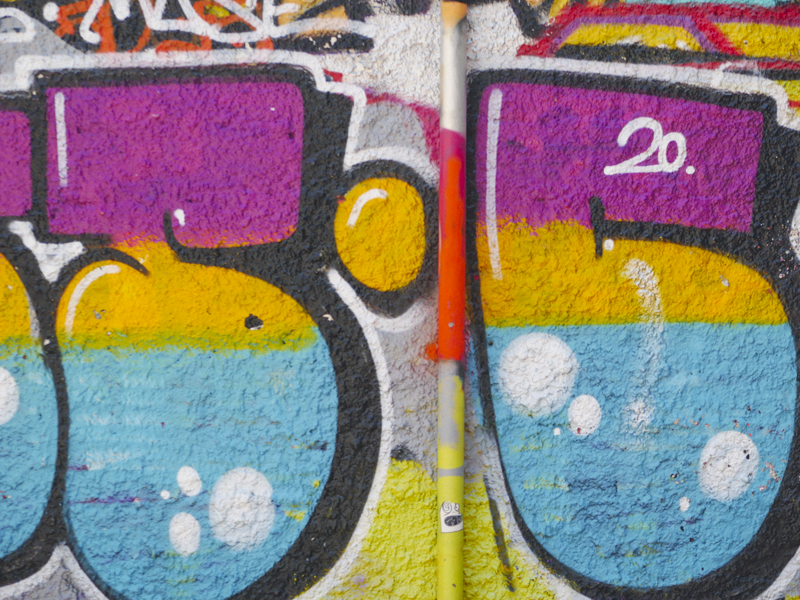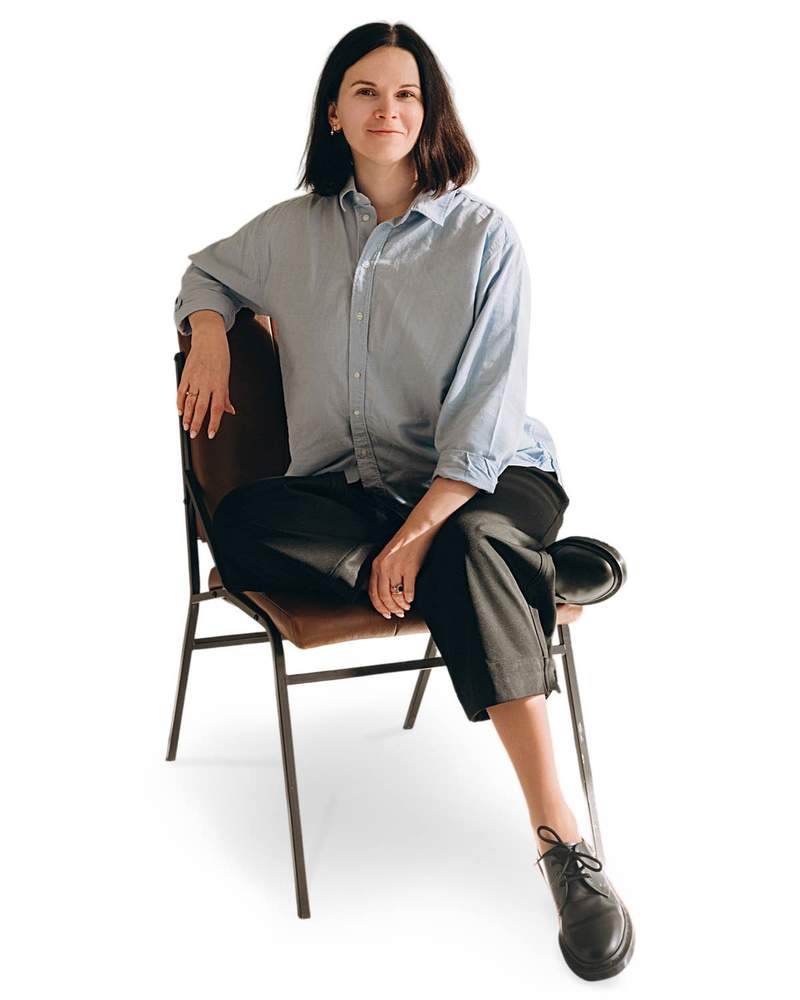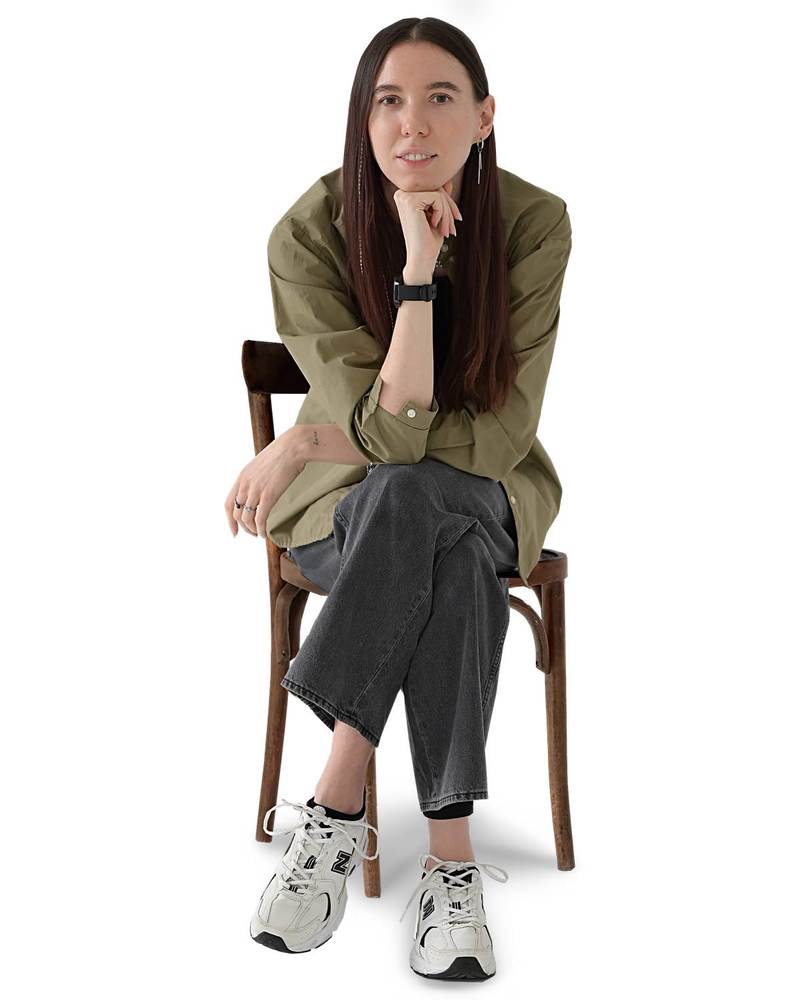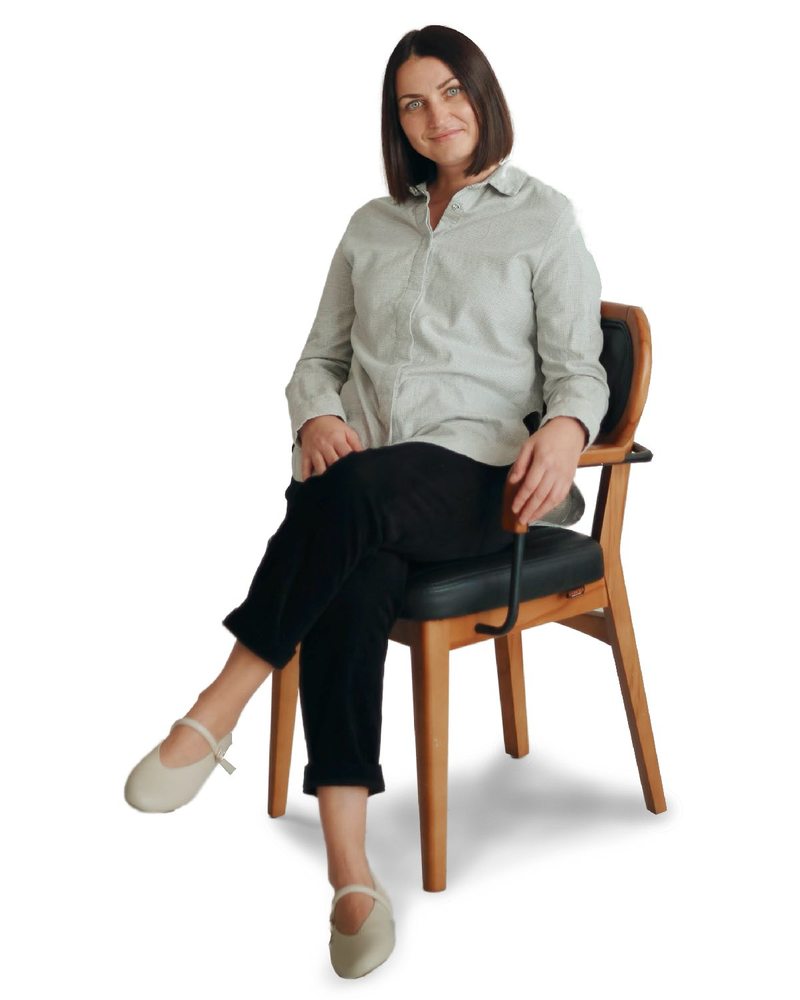We often see the phrase “toxic relationship,” but what does it mean in terms of psychology and psychotherapy? How do you recognize a toxic relationship, how do you get out of it, and how do you recover? We've asked Treatfield's psychotherapists.
Gestalt therapist Masha Tsukanova
What exactly are toxic relationships from a psychotherapeutic perspective? How do they differ from merely "bad" relationships that don't meet partners' needs? Are there specific types or categories of toxic relationships?
"Toxic relationships" isn't a psychological term; it's a popular phrase from everyday language. To avoid building my own theories on toxicity, I'll discuss emotional dependency in relationships, or codependency, as it's sometimes called. This is a recognized theory in the psychological community, rooted in developmental theories. Within this framework, four main types of emotionally dependent individuals are identified: those prone to fusion, those prone to engulfment, distant types, and those who "glide" over contact instead of truly engaging. I believe when people refer to "toxic relationships" in everyday conversation, they most often mean relationships with individuals fitting the second or third of these types. However, in the long run, one is no better than the other, so all should be approached with caution (and, of course, we should watch our own behaviors, as we all have our own shortcomings).
Where I studied emotional dependencies, there are generally 10 criteria for determining if a relationship isn't healthy:
- Confused responsibility for needs. Instead of taking responsibility for their own needs, someone tries to shift it onto another or, conversely, takes on someone else's.
- Blurred psychological, and sometimes even physical, boundaries. One person can't say no, while another encroaches on their partner's values, feelings, thoughts, resources (time, money, energy), or body as if it were their own territory.
- Hierarchy is built not on an adult-to-adult, equal-to-equal principle, but on a child-to-parent principle, where one is "bigger" and the other "smaller."
- Not all feelings are legitimate; not all can be discussed, and sometimes they can't even be experienced—it's better to suppress them to avoid trouble.
- Instead of direct communication, assumptions, manipulations, and double messages are prevalent.
- Self-image in dysfunctional relationships doesn't strengthen and flourish; on the contrary, it erodes, withers, and in extreme cases, completely breaks down.
- Emotional state progressively worsens. Sometimes it's even hard to say why.
- Social contacts outside the relationship wither and become superficial, and new ones don't form. Communication and closeness with friends, colleagues, like-minded people, acquaintances, relatives, and loved ones disappear, and the person ends up in emotional isolation.
- It's very difficult to leave dysfunctional relationships. They're bad, but it feels like other options are even worse.
- The future looks bleak and without prospects.
How do toxic relationships differ from merely "bad" relationships that don't meet partners' needs?
In short, dysfunctional relationships are a chronic condition that tends to worsen, while "merely bad" relationships are just a phase. No couple in the world lived "happily ever after until they died." Even the healthiest relationships inevitably go through extremely unpleasant periods.
After the initial stage of blind infatuation and symbiotic fusion, partners must differentiate – and that's not so fun. Mutual illusions are shattered; differences that need to be dealt with become obvious; and there's a desire to detach slightly from the partner to live one's own life again, but this feels scary, shameful, and guilt-inducing.
But that's not the end. The differentiation stage is followed by a period of disengagement. The partner hasn't disappeared, but personal autonomy comes to the forefront: one's own affairs, interests, and life goals. It's quite painful to realize that you're not the center of your partner's universe, even if they've ceased to be the center of yours.
One might think there's nowhere further to go, but there is. In the next phase, partners turn back to each other, seeking a new balance. Here, as in the differentiation stage, they get to know each other anew, engage in conflict, and seek new proportions in the relationship. Though after so many years, this comes easier than before.
Only after this comes the "happily ever after"—the phase of healthy mutual dependence.
Relationships during turbulent phases might be called bad by some, especially if partners enter these periods at different times: for example, one is still madly in love while the other is sobering up, or one wants autonomy while the other still desires fusion. Similarly, some would call relationships bad during crisis periods: children, renovations, wars, illnesses, relocations, unemployment, changing plans—all of this is difficult and leads to conflicts. But conflicts and crises are normal.
They can be navigated to reach a new level of intimacy, or not, and the relationship can end with a handshake if understanding is impossible. However, none of this can be considered dysfunctional if partners remain within their boundaries, fully experience their feelings and needs, maintain healthy contact with each other, and preserve their freedom of choice.
Are there specific types or categories of toxic relationships?
There are several ways to classify dysfunctional relationships, but here I will focus only on personality types that tend to build destructive emotional codependency rather than intimacy and healthy mutual dependence.
Each of us has boundaries: spiritual (values and beliefs), physical (body and space), mental (thoughts, views), emotional (feelings, mood), material (possessions and money), and sexual (desires, body, preferences). If a person clearly feels the sovereignty of their boundaries, clearly sees and respects the sovereignty of another's territory, and can carefully touch and build contact with another's boundaries with their own—they build ecological relationships.
There are several ways to compromise boundaries between people:
1. Forgetting about one's own needs to please another, giving up one's territory to another: guessing what they need, agreeing to things without desire or resources, rescuing, excessively helping. These are rescuers, and their healthy aggression is blocked, while guilt, conversely, becomes toxic: heaven forbid they don't satisfy the other. This person will be exhausted by endless service and unhappy because their own needs are ignored. At the same time, no matter how advantageous a partner a rescuer may seem, they are dangerous because they either incapacitate their partner or provoke them to become a tyrant. Unconscious guilt (which can be easily manipulated like an "overbearing mother") and aggression arise next to them. Without a partner, rescuers feel incomplete; they vitally need a partner to understand what they want and what to do. The boundaries of two people, in this case, do not touch but merge into one common conglomerate.
2. People of the complementary type—persecutors—tend, on the contrary, to seize another's territory. They impose their values and opinions on others, censor their feelings, scold, and instruct. In extreme cases, they resort to physical violence and emotional terror. They suppress fear and the entire spectrum of vulnerability, but their aggression is pathological—anger arises in place of most other feelings. They are unhappy because they live in a world of spineless doormats and idiots. And their needs are often unmet because their attention doesn't stay within their own boundaries but slips onto another's. Persecutors also cannot bear to be without a partner. They need a symbiosis with someone they can control.
3. If the boundaries in the first two types cross into another's territory, then in the case of the distant type, they, conversely, do not touch the boundaries of the other. They avoid contact, hiding from it. Distant martyrs hide in self-blame and solitude, while distant victims hide in powerless anger towards the world and people. Like rescuers, they manipulate effectively from a "below" position. Near them arises an unconscious desire to chase them, pursue them, melt the ice, and protect them. And one can really burn out or become embittered in attempts to "uncharm" a distant person.
4. The strangest and least obvious type is called the tapper (like a tap dancer). With them, there seem to be no overt problems: they don't fit into commonly known dangerous roles, so they don't raise suspicion. But at the same time, they don't build intimacy or engage in true contact; instead, they remain at a superficial or functional level, "gliding" through relationships like a tap dancer across a floor. Nothing glaring seems to happen, but for some reason, in place of warmth and satisfaction, there's a perpetual emptiness. Oddly enough, relationships with them are the most insidious. It's hardest to recognize and, consequently, resolve the problem in them. And most importantly, it's not obvious primarily to them.

Gestalt therapist Olena Klochko
How to recognize signs of toxic relationships in the early stages of a relationship? What actions or behavior patterns are characteristic of toxic partners?
How to recognize signs of toxic relationships in the early stages of a relationship? What actions or behavior patterns are characteristic of toxic partners?
Toxicity often initially masquerades as care, strong feelings, and adoration. You might recognize it in phrases and suggestions like "You don't have to work, I'll take care of everything," "Don't go to the party, I just want to spend more time alone with you," "How did I live without you, you're my air."
This can sound very romantic and touching, pleasing the heart and soul, making it seem like you've found your soulmate and the close relationship of your dreams. However, behind these words sometimes hides a gradual narrowing of your space—your personal space, choices, and freedom. If you look closely, you might notice that feelings of guilt begin to appear where there was once lightness. Pay attention to your feelings, and if you start to feel guilty about trivial things, that can be a red flag.
What behavior patterns should you notice?
A toxic partner often doesn't appear to be a villain. This might be someone who talks about love but simultaneously devalues your achievements or compares you to others. They might overtly admire you, then suddenly distance themselves—leaving you wondering what you did "wrong." These emotional swings are your compass to recognize that you should observe your feelings more closely: do you feel confident in your abilities, do you receive recognition, and are you accepted as you are? Is there a feeling that you constantly need to become a better version of yourself for your partner?
This could be control: who you're with, where you are, why you didn't reply in 3 minutes. Or passive aggression—silence instead of dialogue. It's the inability to admit their own fault. It's jokes that hurt, but "you're just taking everything too seriously" and "you imagined it all and misunderstood." Your feelings don't deceive you; trust them.
Toxicity often feels like an experience of gradual changes in behavior and feelings. It's when, next to someone, you slowly stop being yourself. When you try to adapt, diminish your scale to fit your partner, quiet your voice, hide your desires, and choose them over yourself. When feelings of anxiety, guilt, and shame frequently appear—but not because something is openly imposed on you, but because it's phrased gently, with love, "for your own good and for the relationship," yet there's a feeling not of closeness, but of constriction and suffocation—that's it.

Gestalt therapist Anastasiia Yeskina
What keeps people in toxic relationships? What steps can be taken to leave toxic relationships and recover from them? What can help and what do you need to know?
Our psyche is structured in such a way that we often unconsciously "choose" not what's best for us, but what is familiar and habitual. So, if a person grew up in a destructive family with a lot of danger, anxiety, loneliness, and instability, that becomes their internal "norm." In adulthood, such an experience can lead them to repeatedly choose similar relationship patterns—simply because they seem familiar, even if they bring suffering.
Moreover, if one had to endure, adapt, defend oneself, and take responsibility for adults' actions in childhood, a deep conviction might form that "there's something wrong with me" or "I need to change, become better, to be loved." One of the most common illusions in toxic relationships is the belief that "I can change this person." For example, if I become better, more patient, and understanding, everything will improve. Unfortunately, this strategy very often leads to even greater frustration and pain, as the person loses themselves trying to earn love.
Paradoxically, safe, caring, and stable relationships can be frightening, cause anxiety, or even boredom. For someone with a traumatic background, for example, this might be something completely new and incomprehensible. The brain simply doesn't know how to behave in conditions of calm and unconsciously seeks "like home," even if "home" was bad or dangerous.
Also, sometimes, especially during intense infatuation, our brain can work against us. The limbic system becomes active, causing "emotional turbulence," while the activity of the prefrontal cortex, which is responsible for critical thinking, planning, and impulse control, significantly decreases. This process is often described in art as "love is blind," which is why psychotherapists often emphasize the importance of building a deep connection with oneself, one's body, and one's needs.
When thoughts and emotions are tangled, I often advise my clients to rely on their body. It, like an internal compass, tells us the truth and guides us in the right direction; the main thing is to learn to listen to it. If, for instance, you feel stress, tension, or fatigue in contact with a certain person, this could be a signal that your body doesn't feel safe around them. Irritability, sleep problems, changes in appetite, difficulty concentrating—all of these can be the language your body uses to try to tell you that something is wrong. Instead of ignoring these signals, it's worth stopping and asking yourself: "Am I truly well in this relationship?"
Why is internal support so important? I resonate with the idea from Barry and Janae Weinhold's book Breaking Free from Codependency that healthy relationships are built not so much on trust in other people (that they won't cause pain), but on trust in oneself and the internal conviction that I can rely on myself, no matter what happens.
In my opinion, the main steps a person can take to protect themselves include working on awareness of their own worth, forming clear personal boundaries, connecting with their own feelings, and a deeper understanding of their needs in relationships. Also important are exploring and accepting one's traumatic experience, understanding its influence on the present, the ability to engage in conflict and express healthy aggression, autonomy and freedom of choice—meaning understanding that if a relationship becomes unhealthy for me, I can leave.
One of the most important factors that helps in leaving toxic relationships and coping with their consequences is the presence of external support, safe contact with others (friends, family, therapist). It's crucial to emphasize here that people often confuse the concept of internal support with the belief that "I must cope with everything myself." In reality, self-reliance also includes knowing that I can ask for help if needed, and that there are people I trust. I am not alone.

Gestalt therapist Maria Aksyonova
How does psychotherapy work with people who are in toxic relationships, or with people who have just left them?
Psychotherapeutic work with toxic relationships begins with awareness and identification of the relationship as toxic. Specifically, the therapist helps the client recognize unhealthy behavior patterns in the relationship: manipulation, control, humiliation, gaslighting, lack of support, disrespect, constant criticism, blame, etc.
It's also important for the client to understand the dynamics of toxic relationships, their role in them, and the impact on their emotions and mental state. Through collaborative work with the therapist, it becomes possible to explore the deeper reasons why a person finds themselves or stays in such relationships—for example, this could be low self-esteem, a need for approval, fear of loneliness, repetition of family patterns, etc.
The second major task of therapy with such clients is increasing the client's self-awareness and self-worth. Therapy promotes a better understanding of the client's own emotions, needs, values, and boundaries. The skill of recognizing one's feelings in response to a partner's toxic behavior helps to realize what behavior from the partner is unacceptable to the client.
The psychotherapist helps to strengthen self-esteem and self-confidence, which is an important step for establishing healthy boundaries and deciding on changes. In this process, the client learns to say "no," assert their needs, and not allow others to violate their boundaries. With the therapist's help, the client tries to develop strategies for responding to boundary violations and the consequences of establishing them.
The therapist teaches the client effective communication methods, which include assertiveness—the ability to express one's needs and thoughts directly, honestly, and with respect for the other. Simultaneously, work is done to recognize ineffective communicative patterns that may support toxic relationships. Such a pattern can include, for example, not vocalizing one's emotions and needs.
Toxic relationships can cause significant emotional trauma. The psychotherapist helps the client to process these traumas, experience pain, anger, disappointment, and other complex emotions.
Realizing the unacceptability of the current relationship confronts the client with the need for change. Psychotherapy creates a safe space for exploring possible ways the relationship can develop: an attempt to improve it if both partners are ready for change and cooperation, or termination. The therapist helps the client weigh all the pros and cons, taking into account their needs and safety, and make a conscious decision.
If the decision is to end the toxic relationship, psychotherapy supports the client through this difficult stage, helping them cope with feelings of loss and fear of the future.
The final step is prevention of future toxic relationships. Psychotherapy helps the client understand their patterns in choosing partners and building relationships, as well as recognizing "red flags" in the early stages of acquaintance and avoiding a repetition of negative experiences. The therapist, together with the client, explores the needs and values on which the client would like to build new relationships.
Working with toxic relationships can be a rather long and complex process, especially if being in such relationships forms a certain life pattern. However, every new step towards one's mental well-being becomes a foundation for desired changes and reinforces self-belief.






-treatfield-1631455421-1861.jpg)




